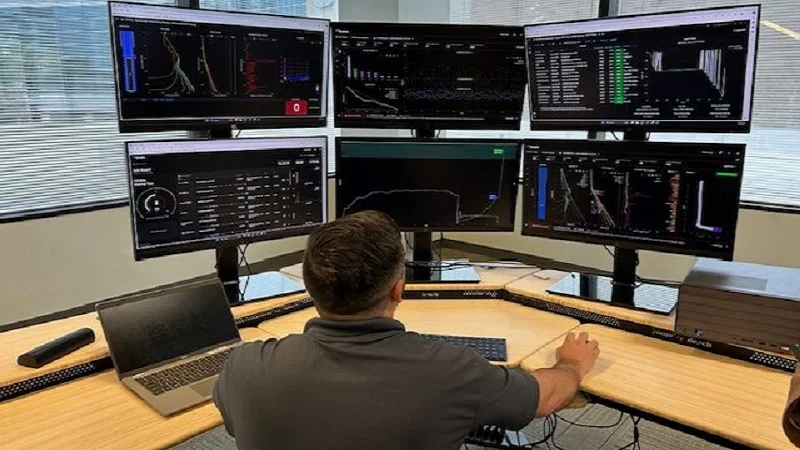

Tenaris, a global manufacturer and supplier of steel pipes and relates services for the energy industry, has used its presence at ADIPEC 2024 to introduce WISer, a suite of digital solutions designed to enhance well integrity, safety, efficiency and reliability.
As one of the world’s leading energy events, there could hardly be a better stage to reveal new solutions that can help the sector deal with its most pressing challenges. As such, WISer becomes the latest addition to the Rig Direct service package and builds on the company’s renowned on-site field assistance.
The pipe-by-pipe traceability enabled by PipeTracer technology and the 24/7 support provided from its remote monitoring centre, WISer includes two digital solutions that maximise the lifecycle of pipe strings.
This includes the iRun Casing cloud-based tool that provides real-time monitoring of casing installation to minimise the risk of lost lateral length and production. It also helps to prevent costly accessibility issues caused by fatigues damage, buckling, over-torque or stuck pipes.
There is also the Torque turn monitoring system. Tenaris field service experts collect and analyse real-time torque data at the well using advanced equipment to improve connection make-up reliability, reduce errors, and enhance the overall integrity of the assembly.
“With WISer, we support our customers' drilling projects during pipe running operations, improving decision-making and enhancing the consistency and reliability of well construction by combining our extensive field service experience with real-time data analytics and remote monitoring,” commented Lucas Pigliacampo, Tenaris Vice President Oil & Gas Technologies. “A key addition to our Rig Direct mill-to-well service model, WISer reflects our ability to continually adapt and innovate.”
Aside from providing a platform for the industry to discover the latest solutions entering the market, ADIPEC was also a forum for debate and progressing ideas that will change the face of the sector for years to come.
Unsurprisingly, decarbonisation was a key topic of discussion of the conference in Abu Dhabi as oil and gas leaders strive to strike the balance between meeting barrel demands and lower emissions output.
Tenaris strode into the discourse, with Gabriel Podskubka, the company’s Chief Operating Officer, participating in the ‘Optimising Operations to Advance Decarbonisation: A Digital and Cultural Shift’ panel session. Here, the panellists agreed that while advanced technologies, data-driven insights and process improvements can contribute to reducing emissions across the value chain, to achieve meaningful decarbonisation, deeper cultural shifts and cross-industry collaboration is required.
“At Tenaris, we are true believers that sustainability and decarbonization support our business strategy” Podskubka contributed. “These are key priorities for our leadership, our employees, our communities, and our customers. Today, our carbon emissions intensity is the lowest in our sector, and we are investing to ensure it remains so in the future. At Tenaris, we see decarbonisation not only as the right thing to do, but as a sound business decision. It’s an opportunity for us to continue leading in another dimension of our business.
“You need a vision, measurable targets and a strong leadership that is willing to convert this vision into reality. After communicating our decarbonisation commitment, we focused on defining KPIs for measuring emissions of our processes at every site. We now communicate both internally and externally on our progress and initiatives to reduce our CO2 emissions intensity per ton of steel by 30% by 2030.”
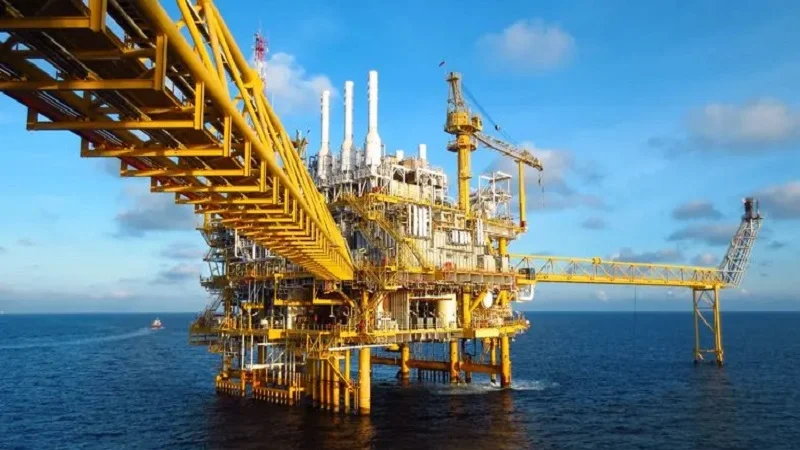

International, a protective coating brand of AkzoNobel, has introduced the next evolution in epoxy passive fire protection (PFP)
Chartek ONE has been introduced as a single-coat, mesh-free solution that simplifies PFP application for assets in the energy sector by maximising efficiency, streamlining installation processes and enhancing health and safety.
As a 100% solids, boron-free two-pack material, Chartek ONE provides enhanced durability and combined corrosion, cryogenic and hydrocarbon protection. It provides three hours of jet and pool fire protection across a wide operating temperature range, effectively shielding assets from all fire types.
Chartek ONE can accelerate installation of PFP systems both in the workshop and onsite, lowering installed weight, reducing labour and material costs whilst achieving the same fire protection, which is particularly important for industries with strict weight requirements, such as offshore oil and gas. In doing so, Chartek ONE can reduce workshop hours by up to 59%, saving users both time and money throughout projects and over the lifetime of the asset.
Introduced for customers in the Middle East, Chartek ONE availability in other regions is planned for 2025.
“Chartek stands at the forefront of the industry, offering a comprehensive range of solutions that reflect our heritage and track record of success,” remarked Robin Wade, Global Fire Protection Manager at AkzoNobel. “Our investment in research, development and PFP capabilities enable us to provide our customers with the best possible outcomes.
“Chartek ONE was developed in our Felling facility which is one of the world’s largest UKAS-accredited PFP testing centers for intumescent PFP. Patented polysiloxane modified thio-ether and epoxy technology resolves many of the pain points found in the provision and longevity of epoxy PFP in one simple solution. International is a dedicated partner and through the celebrated history of Chartek, we are committed to excellence in technical support, product specific engineering solutions, and delivering class-leading products.”
Chartek benefits from a presence in the industry spanning more than half a century. As passive fire protection, it excels in the most demanding conditions and the range is one of the world's most complete portfolio of epoxy intumescent PFP coatings available, according to the company.
Formulated and tested against critical industry standards for energy assets including NORSOK M-501:2022 Edition 7 and ISO 22899 (standard and high heat flux jet fires), Chartek ONE is free from boron and has a 100% solids formula to reduce occupational risks and improve HSE performance and footprint.
“We are thrilled to be introducing Chartek ONE for our Middle East customers at ADIPEC 2024,” added Andy Holt, Business Development Manager - Middle East at International. “Crafted to offer our customers superior safety, reliability, and peace of mind, Chartek ONE showcases our continued dedication to sustainability and innovation.
“This single-coat, mesh-free solution will drastically simplify PFP projects for our customers, minimizing downtime and reducing overall project costs. Our commitment to considering the environmental impact of our work is an integral part of the development process. Chartek ONE’s 100% solids, boron-free formula, stands as a testament to this commitment.”
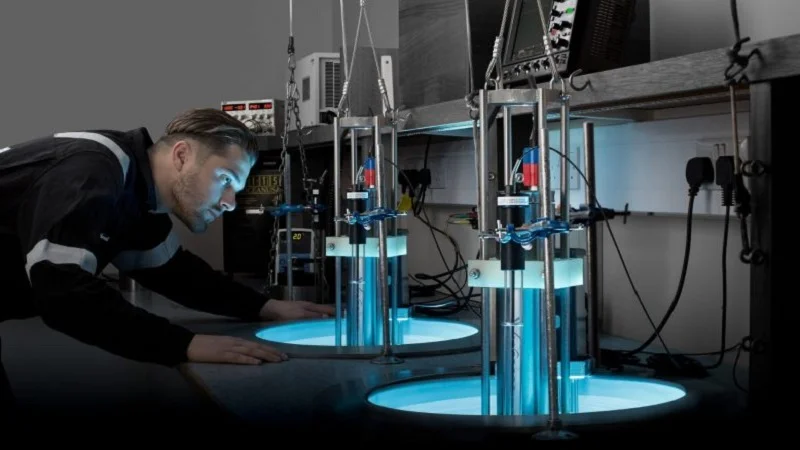

Ashtead Technology, a provider of subsea technology and services, has signed an agreement to acquire Seascan Limited and its subsidiaries (known as Seatronics), as well as its sister company J2 Subsea Limited, international subsea electronics and ROV tooling rental and services businesses, from Acteon Group.
The UK£63mn acquisition – which remains subject to closing conditions – represents the company’s ninth in seven years. By bringing Seatronics and J2 onboard, Ashtead Technology is aiming to expand its capabilities within the global survey & robotics rental market. Together, the two entities have operations in Singapore, UK, US and UAE, from which they provide subsea electronics and tooling products and services to the offshore energy market. This includes supporting the installation, inspection, maintenance & repair, and decommissioning of subsea oil & gas infrastructure, as well as renewable counterparts.
Brice Bouffard, Chief Executive Officer of Acteon, commented, “Upon closing, this transaction will be the next important step in focusing our service portfolio to achieve Acteon’s long-term strategic goals. Seatronics and J2 have been an integral part of our business for many years and I’m very pleased to see both teams moving together to such a dynamic new home at Ashtead Technology.
“Acteon is committed to optimising our portfolio to better serve our customers and stakeholders as we support the evolving offshore energy market.”
In acquiring the two companies Ashtead has gained access to a highly-skilled employee base of 110 and has added more than 7,000 proprietary assets, thus increasing its rental portfolio by 30%.
“Seatronics and J2 are businesses we have known for a long time,” remarked Allan Pirie, Chief Executive Officer of Ashtead Technology. “With our most recent acquisitions focussing on expanding our mechanical services capability, this latest acquisition strengthens our international footprint and capability within our survey & robotics market. We look forward to welcoming new colleagues to Ashtead Technology and increasing the wealth of in-house expertise as a larger Group, creating a world leading subsea survey and robotics team.”
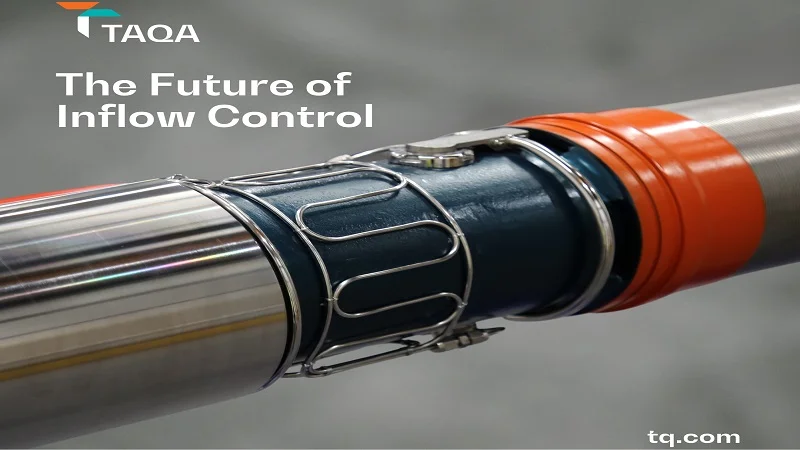

TAQA, an international company offering leading well solutions for the energy industry, has revealed the next-generation inflow control system.
The M4 Inflow Control System dictates the flow of undesired fluid (such as water and gas) and avoids any binary (open/close) effect that can result in instability or even stop production. Enabling operators to optimise their reservoir performance while sustainability managing fluid production, the new system excels in controlling water in ultra-light and light applications and enhances gas production control, providing stability and flexibility in diverse reservoir conditions.
“With the largest portfolio of inflow control systems more than 20 years of inflow control devices expertise, the M4 Inflow Control System represents the pinnacle of our innovation so far,” remarked Mojtaba Moradi, subsurface engineering manager of TAQA. “This new generation offers water control by gradually reducing inflow as water production increases, avoiding premature well shut in.
“Its main benefit is precision control based on reservoir production. The device allows operators to maximise output without risking shutting wells in, so they can manage production continuously and efficiently, which translates into obvious financial benefits.”
According to TAQA, the M4 Inflow Control System technology incorporates an advanced pilot control system that is super sensitive to density, making it suitable for a wide range of oil types, including ultra-light, light, medium, and heavy oils. It also features advanced multi-phase control, allowing the device to perform independently of its orientation in the wellbore.
TAQA also offers a ‘plug and play’ integration with its full portfolio of inflow systems and has been built to optimise performance in all types of wells in all reservoir types. Additional operational features such as last-minute capacity change, and the ability to circulate to the bottom have also been incorporated into the design.
Although not limited to any oil viscosity, so far, the system has demonstrated excellent performance with oil viscosities as low as 0.5cP tested together with water to define the operating and control points at various water cuts. A full qualification matrix of debris, erosion and cycle testing has also been completed.
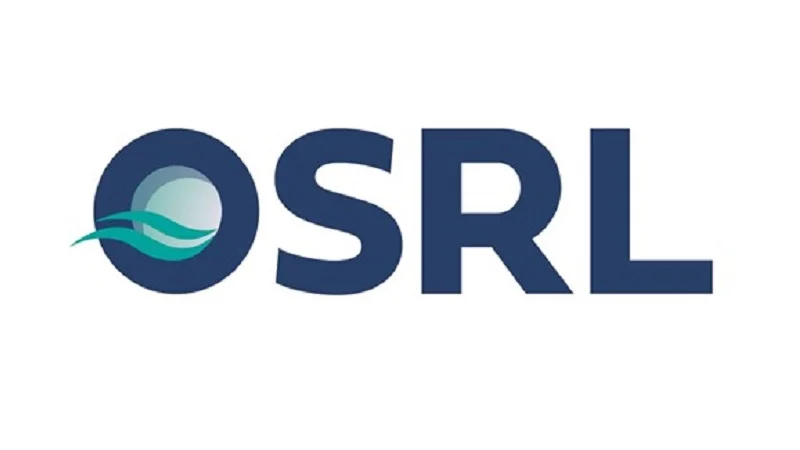

Oil Spill Response Ltd (OSRL), the largest international industry-funded cooperative dedicated to supporting its members in preparing for and responding to oil spills, has marked another step in its rebranding efforts through the reveal of its newly designed logo.
Encapsulating OSRL’s core values of safety, collaboration and innovation while reflecting its commitment to future aspirations, the new logo is part of the company’s wider rebrand which also includes a refreshed mission and vision.
“We wanted a brand that not only reflects our 40 years of leadership but also positions OSRL for the future,” remarked Darren Waterman, Engagement Director. “The new identity stands as a symbol of our unwavering commitment to safety, innovation, and collaboration.”
The new logo, which was conceived through an extensive brand review, will be gradually rolled out across all company touchpoints, including its website, social media channels, training materials, and operational equipment.
“We are proud to introduce a brand that honours our rich legacy while looking toward the future,” commented Vania De Stefani, CEO. “This new logo is not just a visual change; it’s a reflection of OSRL’s evolution and our ongoing dedication to our members and the industry.”
The brand rollout will continue throughout 2025 to ensure a sustainable approach minimising waste.
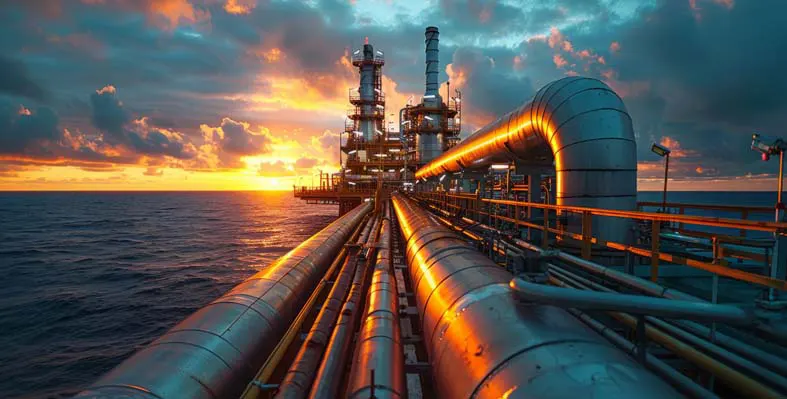
 In an operational update from the SASB gas field well intervention programme, Trillion Energy International has noted the improved flow rates from the South Akcakoca-2 well.
In an operational update from the SASB gas field well intervention programme, Trillion Energy International has noted the improved flow rates from the South Akcakoca-2 well.
“The fantastic response of South Akcakoca-2 once the water was lift off the perforations indicates that the reservoirs will produce the gas they contain once the water loading is removed. The wells are going to be perforated and monitored during clean up to evaluate the reservoirs response. The next phase of this project is to install the smaller production tubing (2 3/8”) to allow the wells to produce for a few years before water loading occurs again," Arthur Halleran, CEO of Trillion, said.
The South Akcakoca-2 well was perforated over the intervals 2319.5-2323.5 (4.0 m), 2339.6-2341.3 (1.7m) and 2411.1-2412.8 (1.7m) for a total of 6.4 m (all measured depth MD). Well hole pressure (WHP) was 86 psi before perforation, the WHP increased to 1046 psi.
The well flowed continuously from early 9 July, and by 10 July afternoon the flow rate was 0.70 MMcf/d with a WHP of 140 psi. By 15 July, the flow rate was 2.88 MMcf/d with a WHP of 318 psi.
Monitoring of the South Akcakoca-2 well will be continued until it hits a stable point.
The production characteristics indicated that perforating the new zones blew the water out of the well, while also implying that the reservoirs that were water-blocked are cleaning up and producing gas.
Guluc-2 well was perforated over the intervals 3512-3514.5 (2.5 m), 3749.5-3751.3 (1.8 m), 3770.7-3772.4 (1.7m) and 3781.6-3783.3 (1.7m) for a total of 7.7 m (all MD). WHP was 650 psi and increased to 1243 psi before settling to 1098 psi.
Guluc-2 will be flowed to clean the water and perforation debris out and be capable of gas production, however, it will then be shut in while South Akcakoca-2 well gas production stabilises.
The increase in the WHP during perforation indicates gas flowed into the borehole from the new perforated zones.
Updated flow rates have yet to be established for this well due to the ongoing testing of SA-2.
The perforation operation is currently continuing ongoing on West Akcakoca-1 well after which it will perforate the remaining pay in Akcakoca-3.

 SLB and TotalEnergies have announced a 10-year partnership to co-develop scalable digital solutions to enable access to energy resources with improved performance and efficiency while establishing a flexible framework to address key challenges including carbon capture, utilisation, and sequestration (CCUS).
SLB and TotalEnergies have announced a 10-year partnership to co-develop scalable digital solutions to enable access to energy resources with improved performance and efficiency while establishing a flexible framework to address key challenges including carbon capture, utilisation, and sequestration (CCUS).
The companies will integrate advanced digital capabilities, including the use of AI with new and existing applications on SLB’s extensible Delfi digital platform. SLB and TotalEnergies will combine digital and domain expertise to accelerate the development and deployment of these solutions at scale, benefiting TotalEnergies’ global operations and SLB’s worldwide customer base.
The partnership will initially focus on subsurface digital solutions for reservoir engineering and geoscience modelling and interpretation, leveraging Delfi on-demand reservoir simulation (ODRS).
Rakesh Jaggi, President of SLB’s Digital & Integration business, said, “Collaboration and knowledge sharing are key for our industry to continuously develop more effective ways of unlocking energy access. With this visionary partnership, we are combining the know-how and expertise of both companies to accelerate the delivery of new digital capabilities that will benefit the whole industry.”
Namita Shah, President, OneTech at TotalEnergies, commented, “Through this digital partnership we will develop cutting-edge next-generation software, digital applications and new algorithms applied to geoscience.
“Thanks to these innovative modelling technologies, we will not only be better able to utilise the analyses of geological reservoirs and basins in the oil and gas sector, to reduce emissions, but also make further progress in geological carbon storage.”
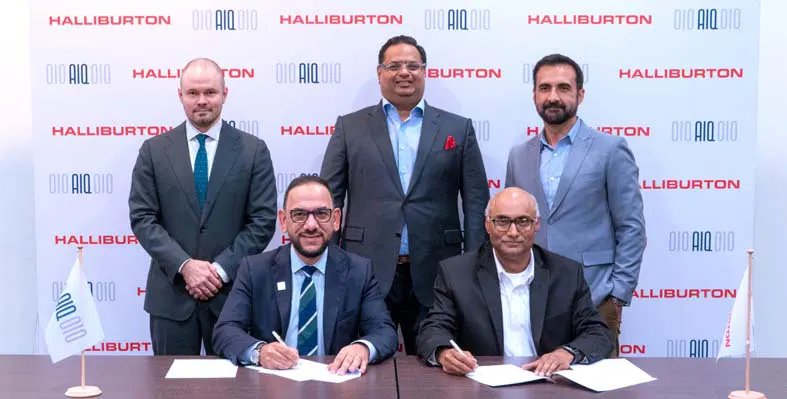
 Leveraging Halliburton's global reputation, Abu Dhabi-based energy tech provider AIQ has partnered with the oil service company's open architecture platform Landmark to expand access of its RoboWell autonomous well control (AWC) solution
Leveraging Halliburton's global reputation, Abu Dhabi-based energy tech provider AIQ has partnered with the oil service company's open architecture platform Landmark to expand access of its RoboWell autonomous well control (AWC) solution
"The combination of AIQ’s AI technology and Halliburton’s extensive industry expertise will help enable greater efficiency and maximise value for our customers’ assets," said Nagaraj Srinivasan, Senior Vice President, Landmark, Halliburton Digital Solutions, and Consulting. “This project exemplifies how Halliburton’s open architecture can help support enhanced efficiency, optimised operations, and drive future growth in the oil and gas industry."
Especially designed for gas lifted wells, RoboWell enables autonomous well operations to maximise production within specified conditions. The AI-supported advanced process control solution, which already has a market presence, boasts of a record achievement by up to 30% optimisation in gas lift consumption, with increased production of existing wells by 5%. Its well stability goals attained through real-time data utilisation also promotes not only good HSE practices but also reduced CO2 emissions.
AIQ CEO, Christopher Cooper said, "This collaboration will help progress our shared vision of how advanced AI solutions can transform the energy industry globally. Collaborating with Halliburton is part of AIQ’s wider strategy to accelerate the availability of our transformative AI products globally to support the sector through autonomous and other AI-based innovations."
The well control solution will now be made available through Halliburton’s Landmark iEnergy hybrid cloud to customers worldwide.
Landmark’s iEnergy is designed to deploy, integrate, and manage sophisticated exploration and production (E&P) applications, and connect assets in public or private cloud environments.


Expro has officially completed its acquisition of Coretrax, marking a significant milestone in the growth of both businesses.
The acquisition will allow Expro to expand its portfolio of cost-effective, technology-enable well construction, well intervention and integrity solutions, while Coretrax will be able to accelerate its technology application globally.
John Fraser, CEO of Coretrax, highlighted how this acquisition marks the start of a “brand-new chapter” for the company by uniting with Expro to expand its capabilities: “Completing this agreement means both organisations working in sync to take on the most complex well challenges. We are proud of our innovation-led approach, strong customer base and performance history as we join forces with Expro to create greater value for customers around the globe.”
Michael Jardon, Chief Executive Officer at Expro, added, “We expect the acquisition to accelerate the growth of Coretrax’s innovative, high value-adding drilling optimisation, well integrity and production enhancing technology solutions by leveraging Expro’s global operating footprint.”
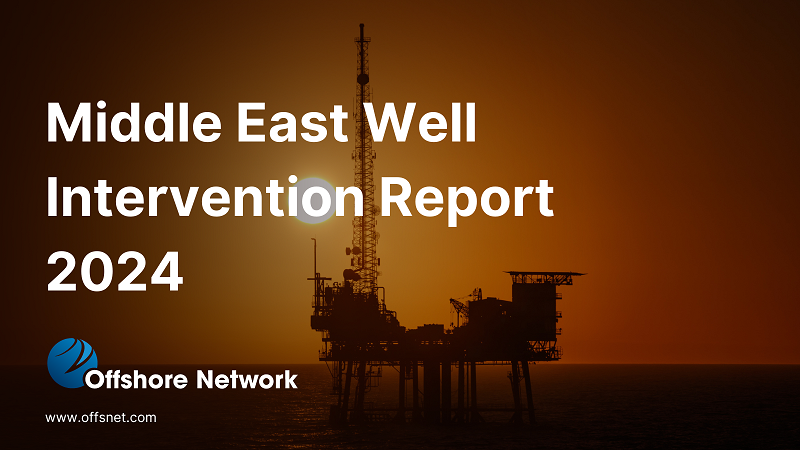

As the oil and gas industry is increasingly seeking sustainability, well intervention remains an obvious choice.
According to Jenny Feng, Supply Chain Analyst, Rystad Energy, operators will look to "ramp up production from existing fields, and well interventions will be a vital piece of the puzzle. As a quick, efficient, and cost-effective method of maximising existing resources, interventions are going to be a hot topic in the years to come." As per the research body’s prediction last year, spending on interventions stands close to nearly US$58bn. With sustainability the focal point, this amount sets the bar for a surge in the coming years as the number of wells ready for intervention is projected to reach 17% by 2027, equating to a total 260,000 wells globally.
Middle East and North Africa's (MENA) eagerness to take up intervention activities is well evident as companies such as Coretrax is showing increased interest in the fossil fuel-driven region. “The Middle East is a key growth area for Coretrax... As operators remain focused on maximising recovery efficiently and sustainably, our expandable technology is ideally placed to support this demand," said John Fraser, Coretrax CEO, while marking the company’s first deployment of ReLineWL straddles in 2022 for a major Saudi operator.
In another multi-year contract in the Middle East signed as recently as October 2023, the well integrity and production optimisation leaser will be delivering production enhancement across a multi-well campaign. It will also be supplying expandable tubulars to support brownfield optimisation. With advanced tools such as ReLineMNS and ReLineHYD expandable casing patches under the brand name, the company will effectively help isolate trouble zones and stimulate production on the operator’s existing wells.
Companies from the region are leveraging artificial intelligence and machine learning (AI and ML), and coming up with groundbreaking digital innovations in the intervention space. AIQ's autonomous well control solution called RoboWell that has been deployed by ADNOC in its North East Bab (NEB) assets remains one such instance. Expro, which is an active player in the MENA region, has come up with a tool called Galea, which is a completely automated well intervention system that can perform a variety of slickline operations, offering easy alternative to conventional methods.
The Middle East and North Africa Well Intervention Outlook attempts to reflect on these industry developments, as OWI MENA 2024 gears up to return in Abu Dhabi from 17-18 September.

Well integrity and production optimisation specialist Coretrax has strengthened its portfolio after acquiring a complementary suite of well intervention technology from Wireline Drilling Technologies.
The significant investment has expanded Coretrax’s offering. Since completing the acquisition, the firm has signed a global route to market agreement with a supermajor to support its well intervention requirements internationally and secured additional work in the Middle East with an existing client.
The company has already integrated the new assets and software, which include wireline pump units, drilling units and tractor modules into its existing technology portfolio. The additional equipment boosts Coretrax’s current well integrity offering, enabling the business to access and address damaged wellbores, and support highly deviated wells more efficiently.
John Fraser, CEO at Coretrax, said, “This investment demonstrates our continued drive to enhance and improve our services, positioning Coretrax as a full turnkey solution for
all wellbore entry and remediation operations. The additional technologies have integrated seamlessly into our portfolio of tools and are supporting several new contracts including a global supermajor and an ongoing long-term project in the Middle East.
“As the industry remains focused on extracting maximum recovery from existing wells, demand for wireline applications has increased as operators realise the cost and sustainability
benefits they bring across well intervention, frac plug drilling, well conveyancing and lateral drilling. Our recent investment will undoubtedly open up new markets for the business and we are excited about the opportunities this will bring.”


Plexus Holdings, an oil and gas engineering services business, has completed an agreement with SLB, a global technology company driving energy innovation for a balanced planet, to replace their existing surface production wellhead licence.
The new licence has a wider field of use for a cash consideration of US$5.2mn. It will provide SLB a perpetual royalty free licence for Plexus’ POS-GRIP technology and HG seal technology along with any improvements or derivates to the technology for surface wellhead production applications. The scope of this includes oil and gas production and storage applications, CO2 storage, hydrogen storage and water and cuttings reinjection.
In addition, the agreement includes a non-exclusive licence to SLB for Adjustable Surface Production Wellheads, and HG Trees with the potential to generate royalties for Plexus from such special applications of the POS-GRIP technology.
"SLB's leading technology position will be further enhanced by this new technology, providing our customers with additional rig time savings through ease of installation and enhanced seal integrity assurance for onshore and offshore applications, commented Badri Mani, Director of Surface Production Systems, SLB. “We are very excited about the prospects for this technology."
According to Plexus, the combination of its technology with SLB’s manufacturing quality, technical expertise, innovation and global support structure will ultimately bring value and efficiency to operators across the globe.
Ben van Bilderbeek, CEO of Plexus, added, “This new licence agreement is a further validation of Plexus' IP by this leading energy technology company and recognises the contribution our leak-proof POS-GRIP wellhead equipment can make to the oil and gas industry's ESG and NetZero goals. Not only does the agreement further reinforce our growing relationship with SLB, but it also enables Plexus to continue to operate in the surface production wellhead sector on a limited basis, whilst focusing on the 'preventative' aspects of POS-GRIP metal seal technology."
Page 1 of 8
Copyright © 2025 Offshore Network